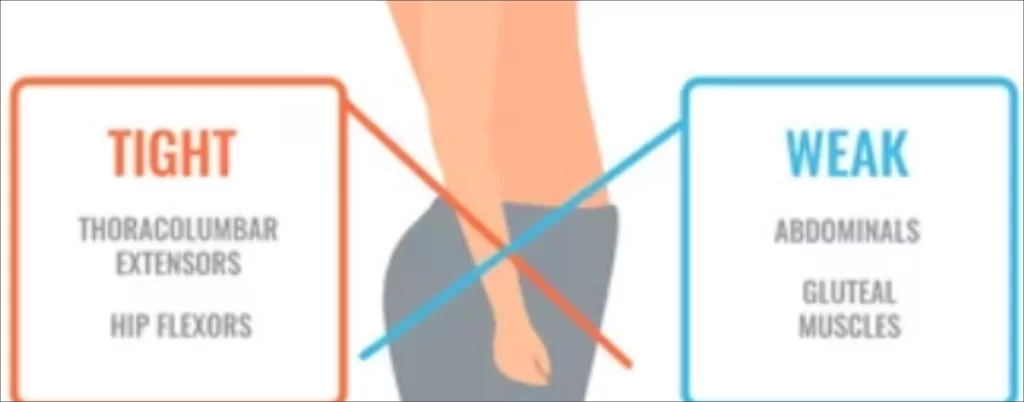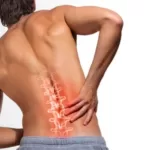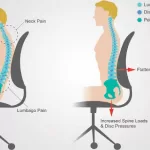UNDERSTANDING LOWER CROSSED SYNDROME (LCS)
Lower Crossed Syndrome (LCS) is a condition that affects the lower back, hips, and legs. It is characterized by an imbalanced distribution of tension and strength in the muscles, leading to pain and discomfort. LCS can result from a number of causes, including poor posture, repetitive motions, and injury. The condition can be treated through a combination of physiotherapy and lifestyle changes. In this article, we will discuss the anatomy, biomechanics, causes, prevention tips, and physiotherapy treatment for Lower Crossed Syndrome.
ANATOMY:
LCS involves the muscles and fascia that attach to the pelvis and lower back. The key muscles involved in this condition are the iliopsoas, rectus femoris, lumbar extensors, and gluteal muscles. The iliopsoas muscle, which is a large muscle group that originates in the hip and runs to the lower back, is a major contributor to LCS. The rectus femoris muscle, which runs from the hip to the knee, also plays a role in the development of the condition. The lumbar extensors, which run along the lower back, provide stability to the spine, while the gluteal muscles, which are responsible for hip extension and rotation, are responsible for supporting the hips.
BIOMECHANICS:
LCS affects the normal biomechanics of the lower back, hips, and legs. This can lead to decreased mobility, instability, and pain. The normal curves of the spine are altered, leading to increased stress on the lower back. This can result in decreased stability, which can increase the risk of injury. In addition, the imbalanced distribution of tension in the muscles can result in decreased range of motion and difficulty performing normal activities.
CAUSES OF LOWER CROSSED SYNDROME:
LCS is caused by a number of factors, including poor posture, repetitive motions, and injury. Poor posture, such as prolonged sitting or standing in one position, can result in tightness in the hip flexors and weakness in the gluteal muscles. Repetitive motions, such as those performed in manual labor, can result in overuse of certain muscles, leading to muscle imbalances. Injury, such as a strain or sprain, can also cause LCS.
PREVENTION TIPS:
To prevent LCS, it is important to maintain good posture and proper body mechanics. This can be achieved through a number of strategies, including:
· Taking regular breaks from prolonged sitting or standing
· Stretching the hip flexors, gluteal muscles, and lumbar extensors
· Strengthening the gluteal muscles and lower back muscles
· Practicing proper lifting techniques
· Wearing supportive shoes with good arch support
· Maintaining a healthy weight
PHYSIOTHERAPY TREATMENT:
LCS can be treated through a combination of physiotherapy and lifestyle changes. Some of the physiotherapy treatment options for LCS include:
Manual Therapy: Manual therapy, such as and mobilization, can help to relieve tightness and improve mobility in the affected muscles. This can help to reduce pain and increase range of motion.
Chiropractic Manipulation and Osteopathy: Chiropractic manipulation and osteopathy can help to realign the spine and restore proper biomechanics. These techniques can help to reduce pain and improve mobility.
Myofascial Releases: Myofascial releases can help to relieve tightness and improve mobility in the affected muscles. This can be achieved through various techniques, including foam rolling and trigger point release.
Posture Correction and Posture Correction Exercises: Posture correction exercises can help to improve posture and reduce the risk of LCS. These exercises target the muscles that contribute to poor posture and work to improve their strength and flexibility. Examples of posture correction exercises include pelvic tilts, bridging, and the McKenzie extension.
Ergonomics Tips to Prevent Posture Corrections: Ergonomic modifications can help to reduce the risk of LCS by reducing the stress placed on the lower back and hips. These modifications may include using an ergonomic chair or desk setup, using a standing desk, or using a cushion or back support while sitting.
Muscle Energy Technique: The muscle energy technique is a type of manual therapy that involves the patient actively contracting and relaxing the muscles in order to improve mobility and reduce pain. This technique can be used to treat LCS by targeting the affected muscles and improving their function.
Joint Mobilization: Joint mobilization is a type of manual therapy that involves gentle movements of the joints to improve mobility and reduce pain. This technique can be used to treat LCS by improving the mobility of the hips, pelvis, and lower back.
Strengthening Exercises: Strengthening exercises can help to improve the strength and stability of the muscles that contribute to LCS. These exercises can include squats, lunges, and leg presses.
Range of Motion Exercises: Range of motion exercises can help to improve the flexibility and mobility of the affected muscles and joints. These exercises may include stretching and yoga poses.
Electrotherapy Modalities: Electrotherapy modalities, such as electrical stimulation and ultrasound, can be used to relieve pain and improve mobility in the affected muscles. These modalities work by using electrical or mechanical energy to stimulate the muscles and improve their function.
In conclusion, Lower Crossed Syndrome can be a painful and debilitating condition. However, with the right combination of physiotherapy and lifestyle changes, it can be effectively treated and prevented. If you are experiencing symptoms of LCS, it is important to seek the help of a physiotherapist to develop a personalized treatment plan.












